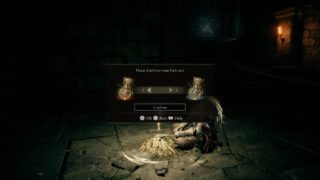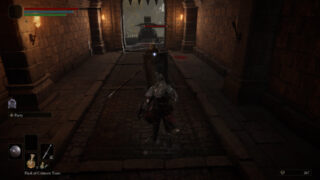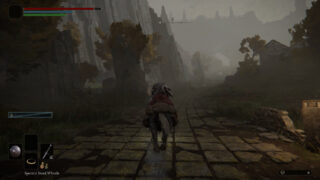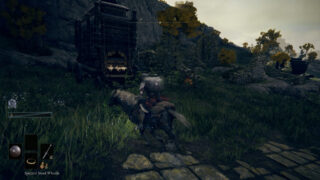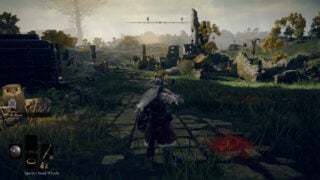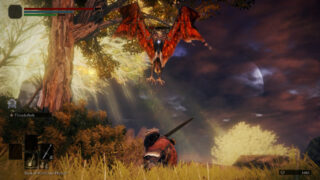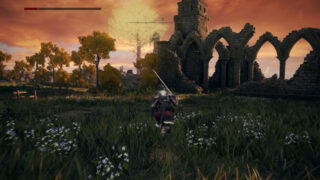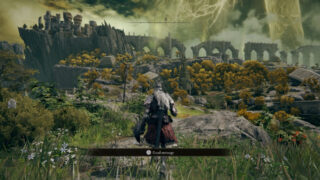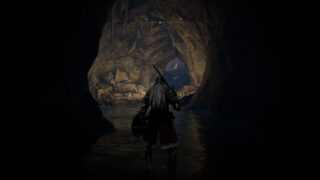2022 Preview: Elden Ring already feels like a special game
From’s open-world debut has an incredible legacy to live up to, but it feels like it might just do it
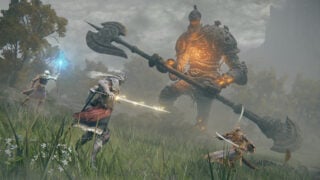
Elden Ring combines the greatest moments of the Souls series with its own ambition to create something that looks incredible.
There are few fanbases with higher standards than the SouldBourne community. The games have risen from the relative obscurity of Demon’s Souls to become one of the most highly regarded series in current gaming, and their creator, Hidetaka Miyazaki has ascended to the status of a game development icon.
While this can be seen as a great thing, it also means that every release in the series is met with higher and higher expectations and hype. This isn’t helped when the game is briefly teased, then disappears for years, only to reappear in a minute of rapturous euphoria at Opening Night Live.
Elden Ring feels like a special game. When we got to go hands-on with the Closed Network Test in November, it didn’t take long to realise that this wasn’t simply Dark Souls thrown into an open world.
Doing so would betray not only what made Dark Souls such a breath of fresh air when people were introduced to the series, but would miss an opportunity to take the open-world genre forward in the same way that the series influenced the last decade of game development.
Elden Ring plays with your expectations. It begins in a dark cave, with a bonfire-like shrine to light, and simple enemies that you have to circle around to stab. It’s dipping your toe back into familiarity before blowing the doors off the game, as you enter the lands between.
In a knowing nod to arguably the most important open-world game of the past few years, Elden Ring pays tribute to The Legend of Zelda: Breath of the Wild by presenting a sprawling world, punctuated with swelling music and a horizon that begs you to explore it. There’s an imposing, blindly bright tree off in the distance, that seems to be providing power to the entire world. It’s a cosmic force, and an immediate mystery for the player to think about. This isn’t the Souls game you know.
With the towering castle walls ahead of you, and the glowing tree beckoning you towards it, you’d think that the natural inclination would be to run straight for the golden path. However, the area around where Elden Ring begins is so full of smaller quests, enemies and even a hidden boss, that from the outset it tells the player that there will be almost no pointless open-world fluff in Elden Ring. Everything you’re doing is for a new piece of lore, a new weapon, or a new incredible boss fight that you need to see.
“Elden Ring plays with your expectations. It begins in a dark cave, with a bonfire-like shrine to light, and simple enemies that you have to circle around to stab.”
The main question that hangs over Elden Ring is just how much of the game will be like the opening fields? Is it a case of this area being the largest before progressing into the more traditional castle and village scenery of the SoulsBourne series? While it’s hard to tell from the map alone, it seems like the world of Elden Ring is going to be significantly bigger than most players expect, and that’s purely on a surface level.
In our time with the Closed Network Test, we couldn’t believe the sheer amount of bosses or mini-bosses that managed to be hidden around the map. Not only that, but when coverage from other outlets came out around the same time, we realised that we somehow hadn’t seen it all.
Elden Ring feels like it’s projecting the inverse message of modern open-world games. Where something like Far Cry 6 is absolutely littered with things that there’s no expectation that you’ll actually do, Elden Ring is telling players “you are going to want to see every inch of this game” and so far, we absolutely do.
What’s yet to be seen is how the game is going to balance the sheer amount of things players can do between boss fights. If a player simply charges to the next gate, are they going to find it impossible to proceed? What about the completionist who takes down every enemy he sees, and then goes to seek out the sub-bosses around the map? Are the main-path battles going to be trivial?
There have also been ways to grind in these games, and it’s not really a Souls game if there isn’t one specific area that the community finds in order to make your character a walking God, but it’s going to be very interesting to see how FromSoftware accounts for this when the player base is going to have such a different experience from each other, even if they’re not simply grinding the game.
Elden Ring’s story, at least from what we’ve been able to absorb from the Closer Network Test, appears to follow From’s tradition of giving the player as little information as possible, while still inviting the player to look deeper lore.
In the old Souls games, there was plenty to find if you went looking, but considering the sheer size of the map in comparison to those old levels, it’s going to be interesting to see if From decides to be somewhat more focused with its narrative, especially because it’s rather unlikely that players are going to scour every corner of the map for every detail unless they’re the most dedicated of Souls historians.
Elden Ring has an incredible legacy to live up to, but from everything we’ve played, it feels like it might just do it. It’s not just open-world Dark Souls. It’s not just Bloodborne of the Wild, it feels like it is trying to step out on its own and go beyond simply being a victory lap for a studio that has more than earned the right to make a game that doesn’t revolutionise a genre, again.
The most exciting thing about Elden Ring is that we genuinely have no idea just how big it’s going to be. The Closed Network Test was a tease that left us wanting more, but how much more? Have we only played the game’s introduction, or are the rolling fields of The Lands Between smaller than we imagined.



